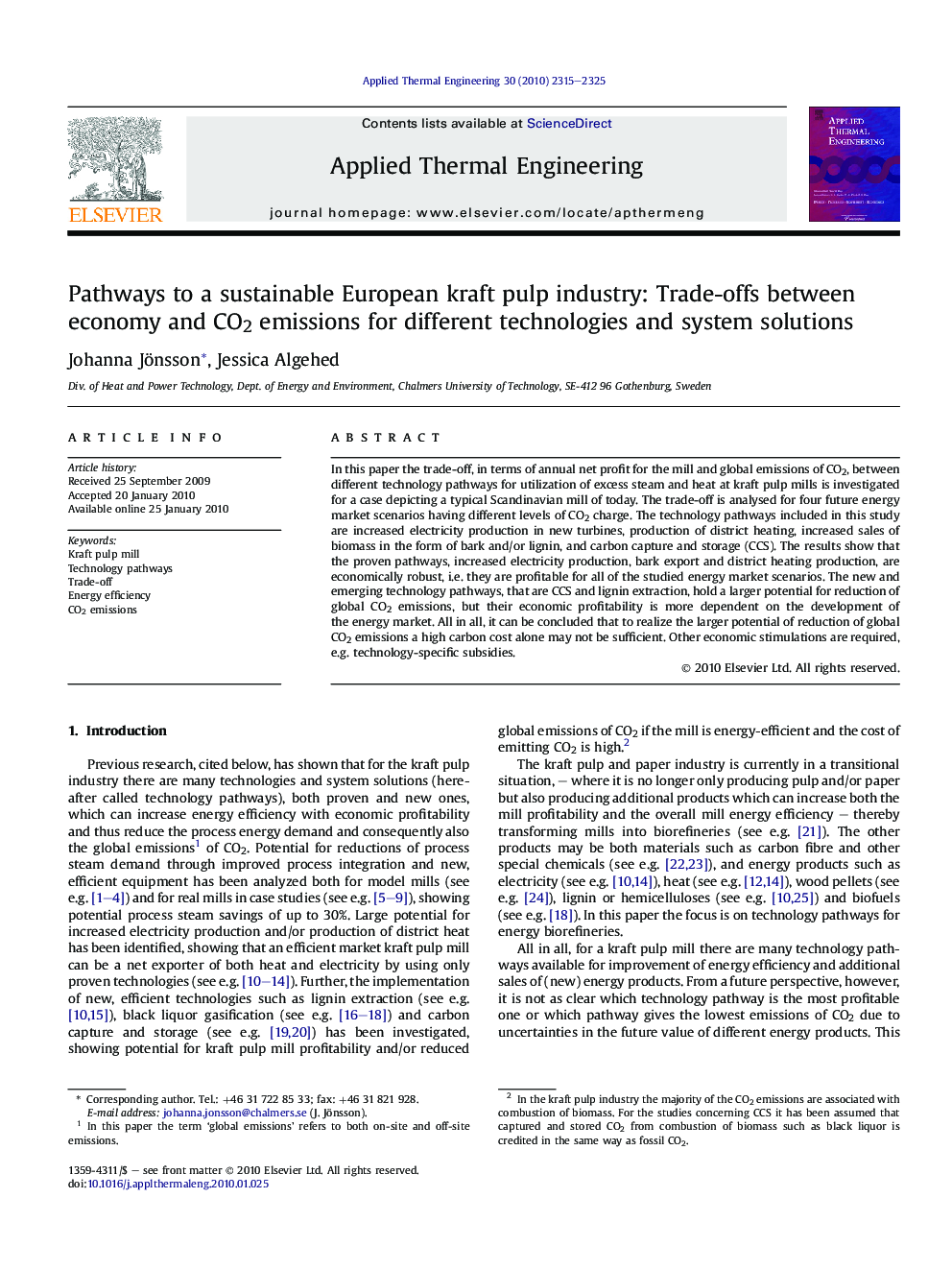| Article ID | Journal | Published Year | Pages | File Type |
|---|---|---|---|---|
| 648160 | Applied Thermal Engineering | 2010 | 11 Pages |
In this paper the trade-off, in terms of annual net profit for the mill and global emissions of CO2, between different technology pathways for utilization of excess steam and heat at kraft pulp mills is investigated for a case depicting a typical Scandinavian mill of today. The trade-off is analysed for four future energy market scenarios having different levels of CO2 charge. The technology pathways included in this study are increased electricity production in new turbines, production of district heating, increased sales of biomass in the form of bark and/or lignin, and carbon capture and storage (CCS). The results show that the proven pathways, increased electricity production, bark export and district heating production, are economically robust, i.e. they are profitable for all of the studied energy market scenarios. The new and emerging technology pathways, that are CCS and lignin extraction, hold a larger potential for reduction of global CO2 emissions, but their economic profitability is more dependent on the development of the energy market. All in all, it can be concluded that to realize the larger potential of reduction of global CO2 emissions a high carbon cost alone may not be sufficient. Other economic stimulations are required, e.g. technology-specific subsidies.
